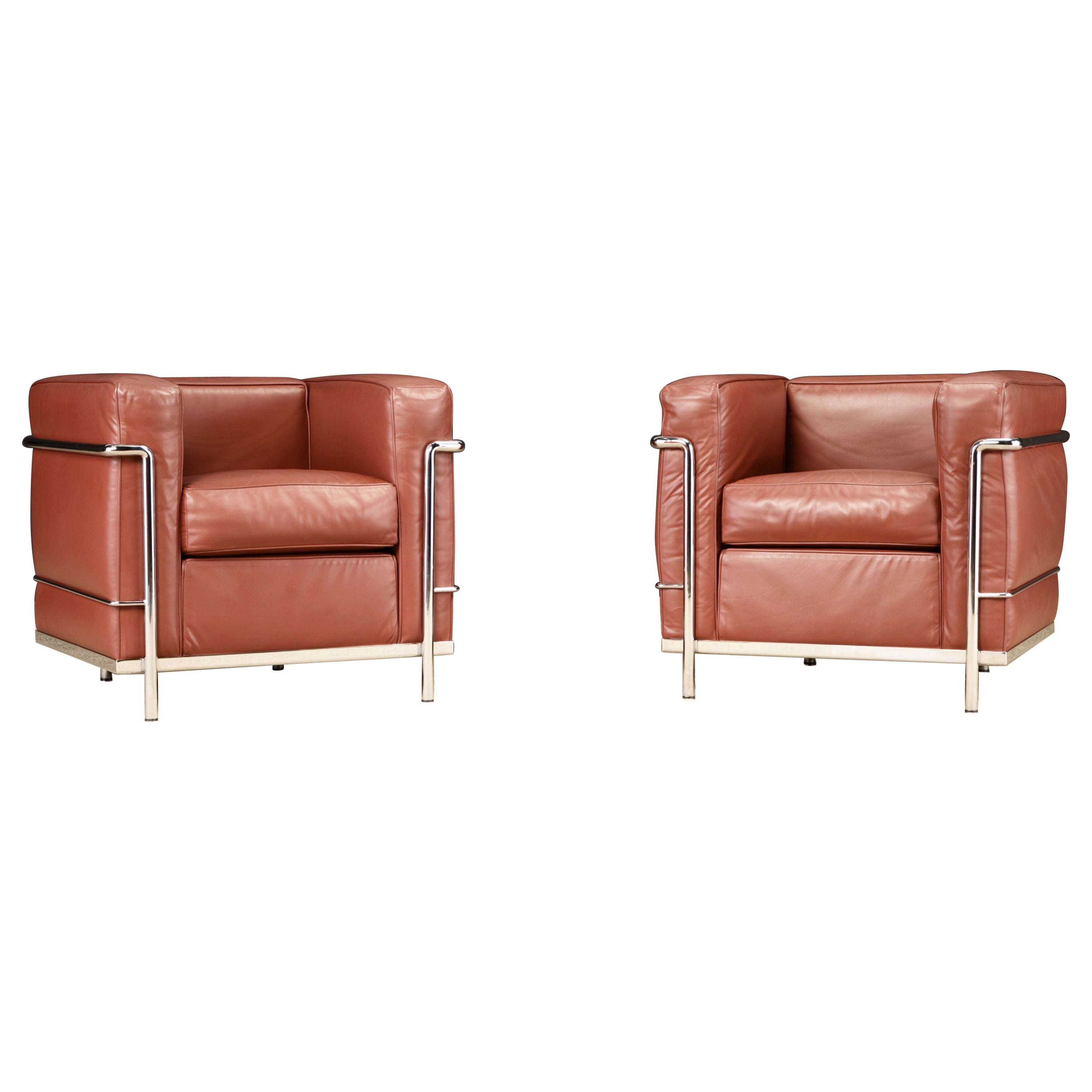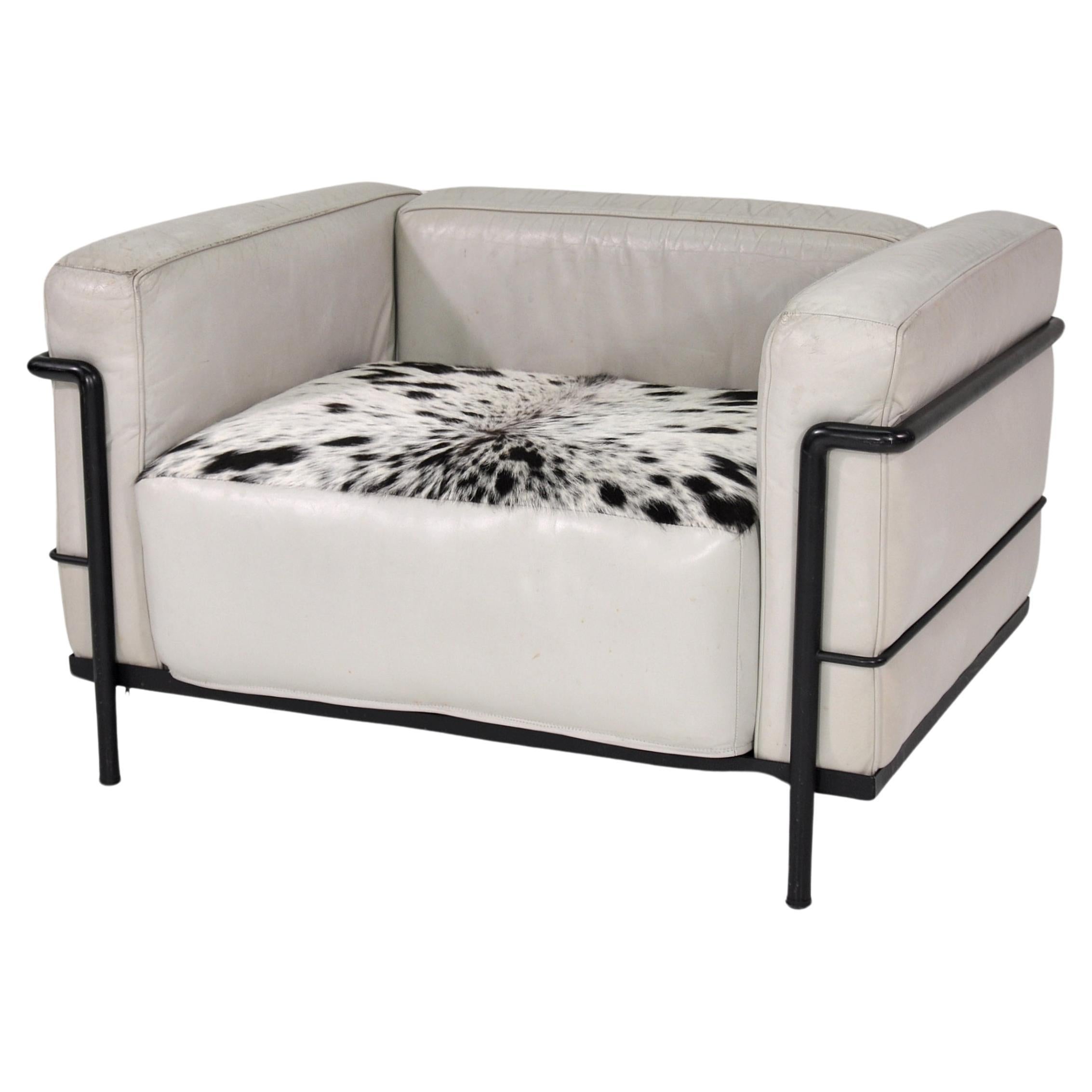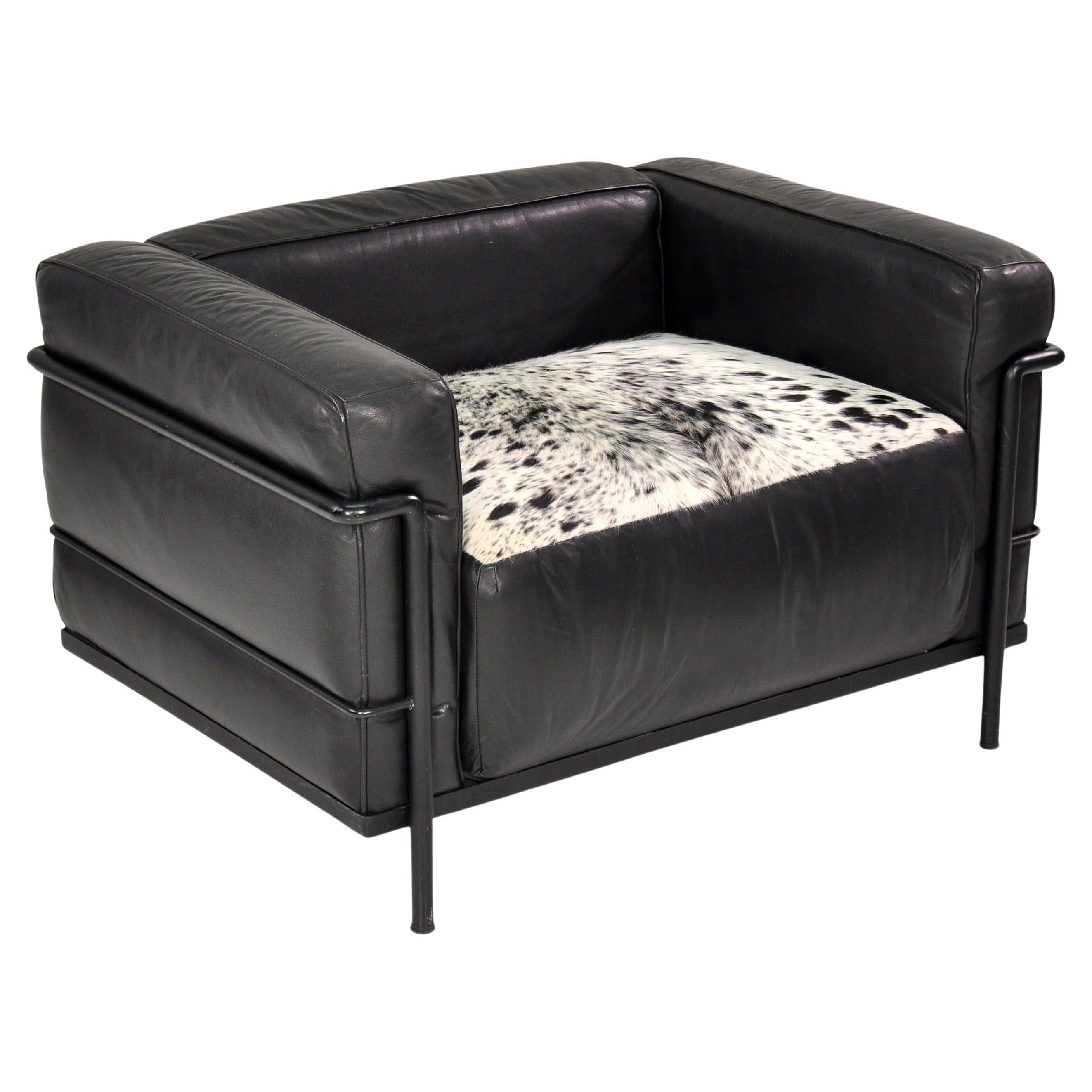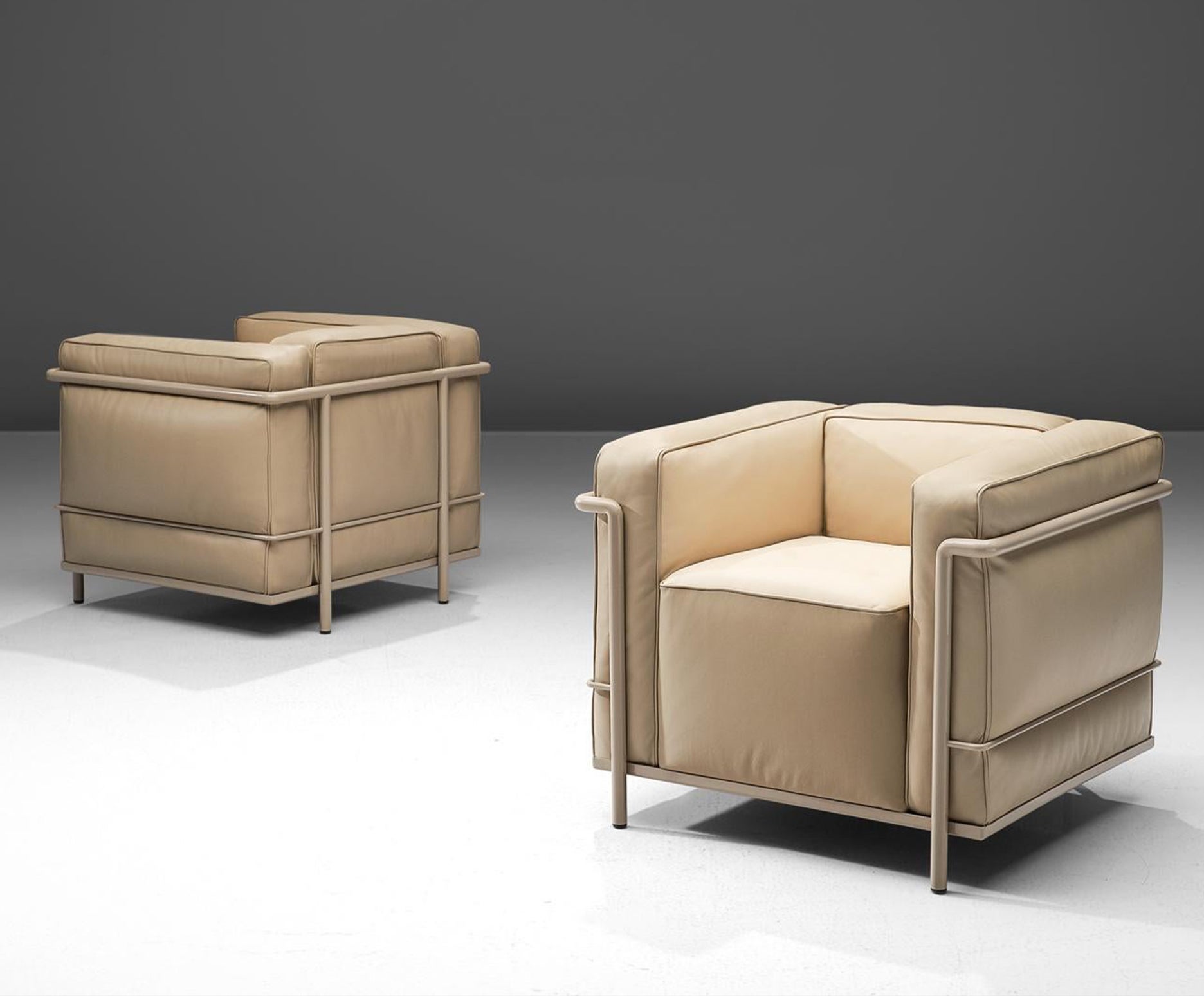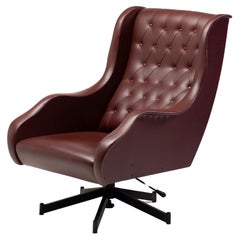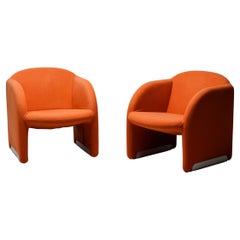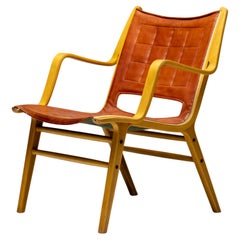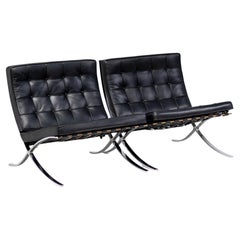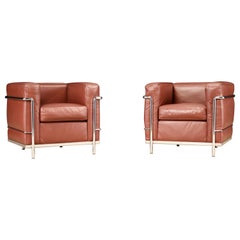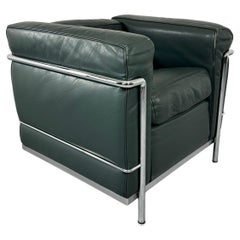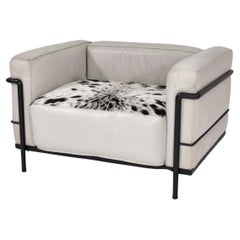Pair of Oxblood Leather 'LC2' Arm Chairs by Le Corbusier for Cassina, Signed
About the Item
- Creator:Pierre Jeanneret (Designer),Le Corbusier (Designer),Charlotte Perriand (Designer),Cassina (Manufacturer)
- Design:
- Dimensions:Height: 27.56 in (70 cm)Width: 29.93 in (76 cm)Depth: 27.56 in (70 cm)Seat Height: 18.51 in (47 cm)
- Sold As:Set of 2
- Style:Bauhaus (Of the Period)
- Materials and Techniques:
- Place of Origin:
- Period:
- Date of Manufacture:1990s
- Condition:Wear consistent with age and use.
- Seller Location:Dronten, NL
- Reference Number:1stDibs: LU931443391772
LC2 Petit Confort Chair
Does anything sound more comfortable than a “cushion basket”? That’s what Charles-Édouard Jeanneret (1887–1965), a.k.a. Le Corbusier, and his collaborators, cousin Pierre Jeanneret (1896–1967) and Charlotte Perriand (1903–99), dubbed the LC2 Petit Confort chair (as well as the rest of the similarly shaped seats in the LC series), the group’s modern take on an age-old form: the club chair.
The LC2 Petit Confort chair quite literally inverts the traditional construction of a chair (or any piece of furniture, really) using an exoskeleton of chromed tubular steel instead of hiding the construction inside, prioritizing an emphasis on function that boldly declared their modernist approach. Meanwhile, thick leather cushions make the seat exceptionally comfortable and lend it a boxy appearance that is compatible with the architecture and design of the International Style in which the group worked.
The trio conceived the cube-like seats in the LC collection in 1928 for exhibition at the 1929 Parisian art fair Salon d’Automne, and Austrian manufacturer Thonet was producing the group's designs at the time. Decades later, in 1965, when the designers’ modernist style had become widely popular, the LC2 Petit Confort chair was issued by Italian manufacturer and high-end furniture company Cassina, which continues to produce it today, along with the stylistically similar LC3 collection.
The LC2 armchair was born of a period of experimentation with tubular chrome by the Le Corbusier group — archival sketches authored by Le Corbusier and Perriand are demonstrative of a two-year collaborative process, while Le Corbusier's brief identifies the latter as having been put in charge of furniture and interiors. (Furniture designer and architect Marcel Breuer, whose Cesca chair was similarly structured, was also working with chrome.) The use of chrome in the trio’s LC lines was groundbreaking at that point, and its aesthetic aligned well with Le Corbusier’s having given the furniture the mechanical-sounding label “domestic equipment.”
Pierre Jeanneret
If his famed cousin and longtime colleague Charles-Édouard Jeanneret — better known as Le Corbusier — was the visionary, then Pierre Jeanneret was the member of the architecture and design team who got things done. In recent years, Jeanneret has emerged from Le Corbusier’s shadow, as collectors have discovered his simple and striking chairs, benches, coffee tables and other furniture creations.
Jeanneret studied at the École des Beaux-Arts in Geneva and after he graduated in 1921 he became a partner in Le Corbusier’s office in Paris. The pair collaborated on numerous residential projects, most notably the Villa Savoye, the iconic modernist house in suburban Paris completed in 1931.
Jeanneret also worked with the great Charlotte Perriand on the Grand Modele line of tubular metal furnishings that was a sensation at the annual Salon d’Automne design expo in 1929. A rift developed between Jeanneret and his cousin during World War II, as the former joined the French resistance, while Le Corbusier cooperated with the occupying authorities in Vichy. The two did not work together again until 1950, when Le Corbusier persuaded Jeanneret to help execute the master plan for the new city of Chandigarh in Punjab, India. Jeanneret lived and worked there until the final years of his life.
A hallmark of Jeanneret’s furniture designs is his great sensitivity to materials. In contrast to the tubular-steel chairs produced by Marcel Breuer and other members of the Bauhaus, the chromed metal pieces designed by Jeanneret and Perriand — including such as the now-classic LC4 chaise longue and the Grand Confort lounge chair — have a sensuous, relaxed and welcoming look. Conversely, while Jeanneret uses essentially geometric forms for his wooden seating pieces, they exude warmth by nature of the material.
One of Jeanneret’s first manufactured designs in wood is the Model 92 Scissors chair, licensed by Hans and Florence Knoll when they were touring postwar France. But Jeanneret’s finest work in furniture was done in Chandigarh, and these are the pieces that have earned him recent renown.
Crafted of teak, the Chandigarh designs range from low-slung lounge chairs and armchairs with cane seats to desks and tables, most with Jeanneret’s signature drafting compass-shaped legs. Many such pieces on the market today are refurbished, having been found by dealers languishing in scrapyards in India in the late 1990s. Chandigarh is now taking better care of its modernist heritage, making available Jeanneret works all the rarer.
Find authentic vintage Pierre Jeanneret chairs, case pieces, tables and other furniture today on 1stDibs.
- ShippingRetrieving quote...Shipping from: Dronten, Netherlands
- Return Policy
More From This Seller
View AllMid-20th Century Italian Mid-Century Modern Lounge Chairs
Steel
Vintage 1980s French Organic Modern Armchairs
Aluminum
Vintage 1960s Danish Scandinavian Modern Lounge Chairs
Leather, Birch, Teak
Vintage 1970s American Mid-Century Modern Lounge Chairs
Steel, Chrome
Vintage 1970s Finnish Scandinavian Modern Lounge Chairs
Aluminum
Mid-20th Century German Mid-Century Modern Armchairs
Chrome
You May Also Like
Vintage 1970s Italian Bauhaus Club Chairs
Chrome
Mid-20th Century Italian Bauhaus Armchairs
Chrome
Mid-20th Century Italian Bauhaus Armchairs
Chrome
Vintage 1970s Italian Bauhaus Lounge Chairs
Steel
Vintage 1970s Italian Bauhaus Lounge Chairs
Steel
Vintage 1970s Italian Bauhaus Lounge Chairs
Steel
